4.2: Insolation
- Page ID
- 15178
\( \newcommand{\vecs}[1]{\overset { \scriptstyle \rightharpoonup} {\mathbf{#1}} } \)
\( \newcommand{\vecd}[1]{\overset{-\!-\!\rightharpoonup}{\vphantom{a}\smash {#1}}} \)
\( \newcommand{\dsum}{\displaystyle\sum\limits} \)
\( \newcommand{\dint}{\displaystyle\int\limits} \)
\( \newcommand{\dlim}{\displaystyle\lim\limits} \)
\( \newcommand{\id}{\mathrm{id}}\) \( \newcommand{\Span}{\mathrm{span}}\)
( \newcommand{\kernel}{\mathrm{null}\,}\) \( \newcommand{\range}{\mathrm{range}\,}\)
\( \newcommand{\RealPart}{\mathrm{Re}}\) \( \newcommand{\ImaginaryPart}{\mathrm{Im}}\)
\( \newcommand{\Argument}{\mathrm{Arg}}\) \( \newcommand{\norm}[1]{\| #1 \|}\)
\( \newcommand{\inner}[2]{\langle #1, #2 \rangle}\)
\( \newcommand{\Span}{\mathrm{span}}\)
\( \newcommand{\id}{\mathrm{id}}\)
\( \newcommand{\Span}{\mathrm{span}}\)
\( \newcommand{\kernel}{\mathrm{null}\,}\)
\( \newcommand{\range}{\mathrm{range}\,}\)
\( \newcommand{\RealPart}{\mathrm{Re}}\)
\( \newcommand{\ImaginaryPart}{\mathrm{Im}}\)
\( \newcommand{\Argument}{\mathrm{Arg}}\)
\( \newcommand{\norm}[1]{\| #1 \|}\)
\( \newcommand{\inner}[2]{\langle #1, #2 \rangle}\)
\( \newcommand{\Span}{\mathrm{span}}\) \( \newcommand{\AA}{\unicode[.8,0]{x212B}}\)
\( \newcommand{\vectorA}[1]{\vec{#1}} % arrow\)
\( \newcommand{\vectorAt}[1]{\vec{\text{#1}}} % arrow\)
\( \newcommand{\vectorB}[1]{\overset { \scriptstyle \rightharpoonup} {\mathbf{#1}} } \)
\( \newcommand{\vectorC}[1]{\textbf{#1}} \)
\( \newcommand{\vectorD}[1]{\overrightarrow{#1}} \)
\( \newcommand{\vectorDt}[1]{\overrightarrow{\text{#1}}} \)
\( \newcommand{\vectE}[1]{\overset{-\!-\!\rightharpoonup}{\vphantom{a}\smash{\mathbf {#1}}}} \)
\( \newcommand{\vecs}[1]{\overset { \scriptstyle \rightharpoonup} {\mathbf{#1}} } \)
\( \newcommand{\vecd}[1]{\overset{-\!-\!\rightharpoonup}{\vphantom{a}\smash {#1}}} \)
\(\newcommand{\avec}{\mathbf a}\) \(\newcommand{\bvec}{\mathbf b}\) \(\newcommand{\cvec}{\mathbf c}\) \(\newcommand{\dvec}{\mathbf d}\) \(\newcommand{\dtil}{\widetilde{\mathbf d}}\) \(\newcommand{\evec}{\mathbf e}\) \(\newcommand{\fvec}{\mathbf f}\) \(\newcommand{\nvec}{\mathbf n}\) \(\newcommand{\pvec}{\mathbf p}\) \(\newcommand{\qvec}{\mathbf q}\) \(\newcommand{\svec}{\mathbf s}\) \(\newcommand{\tvec}{\mathbf t}\) \(\newcommand{\uvec}{\mathbf u}\) \(\newcommand{\vvec}{\mathbf v}\) \(\newcommand{\wvec}{\mathbf w}\) \(\newcommand{\xvec}{\mathbf x}\) \(\newcommand{\yvec}{\mathbf y}\) \(\newcommand{\zvec}{\mathbf z}\) \(\newcommand{\rvec}{\mathbf r}\) \(\newcommand{\mvec}{\mathbf m}\) \(\newcommand{\zerovec}{\mathbf 0}\) \(\newcommand{\onevec}{\mathbf 1}\) \(\newcommand{\real}{\mathbb R}\) \(\newcommand{\twovec}[2]{\left[\begin{array}{r}#1 \\ #2 \end{array}\right]}\) \(\newcommand{\ctwovec}[2]{\left[\begin{array}{c}#1 \\ #2 \end{array}\right]}\) \(\newcommand{\threevec}[3]{\left[\begin{array}{r}#1 \\ #2 \\ #3 \end{array}\right]}\) \(\newcommand{\cthreevec}[3]{\left[\begin{array}{c}#1 \\ #2 \\ #3 \end{array}\right]}\) \(\newcommand{\fourvec}[4]{\left[\begin{array}{r}#1 \\ #2 \\ #3 \\ #4 \end{array}\right]}\) \(\newcommand{\cfourvec}[4]{\left[\begin{array}{c}#1 \\ #2 \\ #3 \\ #4 \end{array}\right]}\) \(\newcommand{\fivevec}[5]{\left[\begin{array}{r}#1 \\ #2 \\ #3 \\ #4 \\ #5 \\ \end{array}\right]}\) \(\newcommand{\cfivevec}[5]{\left[\begin{array}{c}#1 \\ #2 \\ #3 \\ #4 \\ #5 \\ \end{array}\right]}\) \(\newcommand{\mattwo}[4]{\left[\begin{array}{rr}#1 \amp #2 \\ #3 \amp #4 \\ \end{array}\right]}\) \(\newcommand{\laspan}[1]{\text{Span}\{#1\}}\) \(\newcommand{\bcal}{\cal B}\) \(\newcommand{\ccal}{\cal C}\) \(\newcommand{\scal}{\cal S}\) \(\newcommand{\wcal}{\cal W}\) \(\newcommand{\ecal}{\cal E}\) \(\newcommand{\coords}[2]{\left\{#1\right\}_{#2}}\) \(\newcommand{\gray}[1]{\color{gray}{#1}}\) \(\newcommand{\lgray}[1]{\color{lightgray}{#1}}\) \(\newcommand{\rank}{\operatorname{rank}}\) \(\newcommand{\row}{\text{Row}}\) \(\newcommand{\col}{\text{Col}}\) \(\renewcommand{\row}{\text{Row}}\) \(\newcommand{\nul}{\text{Nul}}\) \(\newcommand{\var}{\text{Var}}\) \(\newcommand{\corr}{\text{corr}}\) \(\newcommand{\len}[1]{\left|#1\right|}\) \(\newcommand{\bbar}{\overline{\bvec}}\) \(\newcommand{\bhat}{\widehat{\bvec}}\) \(\newcommand{\bperp}{\bvec^\perp}\) \(\newcommand{\xhat}{\widehat{\xvec}}\) \(\newcommand{\vhat}{\widehat{\vvec}}\) \(\newcommand{\uhat}{\widehat{\uvec}}\) \(\newcommand{\what}{\widehat{\wvec}}\) \(\newcommand{\Sighat}{\widehat{\Sigma}}\) \(\newcommand{\lt}{<}\) \(\newcommand{\gt}{>}\) \(\newcommand{\amp}{&}\) \(\definecolor{fillinmathshade}{gray}{0.9}\)The Earth is "constantly" bathed in solar radiation. On average, the Earth receives 1368 W/m2 (1.96 ly/min) of solar radiation at the outer edge of the atmosphere, called the "solar constant". However, the actual amount received at the edge of the atmosphere and the Earth's surface varies from place to place and day to day on account of the orientation of the Earth to the Sun. The solar radiation that makes its way through the atmosphere and to the surface is called insolation. The amount of insolation received at the surface depends on 1) the sun angle, 2) day length, 3) ground slope, 4) path length, and 5) the state of the atmosphere.
Sun Angle and Insolation
The amount and intensity of solar radiation reaching the Earth is affected by the tilt of the Earth's axis and its orientation as it revolves around the Sun. The sun angle at a place varies over the course of the year as a result of the constant tilt and parallelism of the earth's axis. As the sun angle decreases, light is spread over a larger area and decreases in intensity (energy input per unit area).

Figure \(\PageIndex{2}\) illustrates the effect of changing sun angle on the area illuminated and intensity of heating at different sun angles. Beam A and B have the same amount of energy as they pass through the atmosphere as shown by having the same width. Beam A strikes the surface at a 90 degree angle, the highest angle a beam of light can have. It illuminates the area outlined by the solid square. Beam B strikes the surface at a lower angle than A. Its energy is spread over a larger area, the same area as A's plus the area enclosed by the dashed lines. The result of spreading the same energy out over a larger area is to reduce the intensity . Lower intensity input results in less heating.
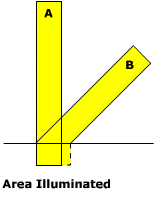
Think of the sun angle as how high the Sun appears above your horizon. The Sun's zenith angle is the angle that a beam of light makes with a line drawn perpendicular to the surface. Think of the zenith angle as how far the Sun is from being directly overhead. The most intense incoming solar radiation occurs where the Sun's rays strike the Earth at the highest angle. For any particular location this occurs at noon. This angle is referred to as the "noon sun angle". Those living in the mid to high latitudes have probably noticed that the Sun never appears directly overhead at noon on any given day. This is due to the seasonal changes in the Sun's declination, the angular distance north or south of the equator where the Sun is directly overhead. The latitude where the Sun is directly overhead at noon is the subsolar point.
Daylength and Insolation
In Chapter 2: The Earth System we discovered that the tilt of the earth's axis and constant parallelism of the earth as it revolves around the sun causes day length to change throughout the year, except for the equator. The circle of illumination always bisects the equator resulting in equal day length, but cuts all other latitude unequally, yielding unequal periods of day and night except for the equinoxes. Simply put, the longer the daylight period, the more insolation received at a given location.
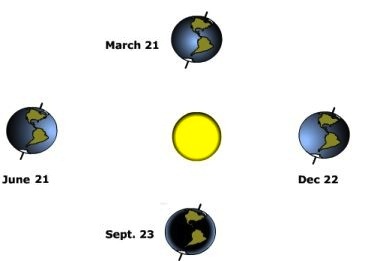
Ground Slope and Insolation
The slope of the surface that a beam of light strikes affects the intensity of energy it receives. Slope affects insolation intensity in two ways, 1) the degree of slope inclination, and 2) the orientation of the slope to incoming light.
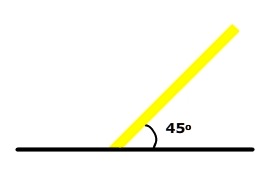
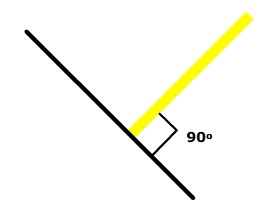
The effect of ground slope is to change the angle that a beam of light strikes the earth (i.e. the sun angle). Figure \(\PageIndex{4}\) shows a beam of light striking horizontal slope at a 45o angle on the left. On the right, the slope is tilted to a 45o angle while keeping the beam coming to the earth as it was before. By tilting the surface into the Sun, you effectively increase the sun angle. Increasing the sun angle increases the intensity of energy received at the surface.
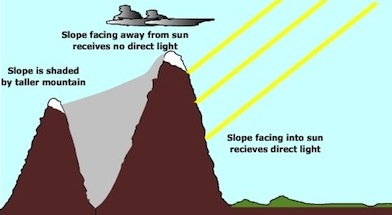
Orientation, or direction the slope is facing also affects the amount of insolation received. Slopes facing into the Sun receive more while those that face away receive less. Some surfaces can be shaded during a portion of the day by obstructions reducing the amount of insolation received by them.
The video below illustrates the effect of orientation on insolation in the mountains of the Cascade Range. Start the movie and watch how slope orientation affects shading. North is at the top of the video. As the sun rises east facing slopes are receiving sunlight while the western slopes are in the shade. As the Sun travels toward the south, the range is aligned parallel to incoming light and both slopes are bathed in sunlight. As the Sun sets in the west in the late afternoon, west-facing slopes are receiving light and eastern slope are in the shade.
Video: Daylight simulation in Wenatchee National Forest, Washington
Path length and Insolation
The distance a beam of light travels affects the amount of solar energy that ultimately reaches the Earth. Light spreads outward in all directions when it is emitted from the Sun. As the light spreads, its intensity upon reaching distant locations decreases. The intensity of light decreases as the square of the distance between the Sun and receptor increases, a relationship known as the inverse square law. The Earth receives about one-half of one billionth of the Sun's total output of energy.
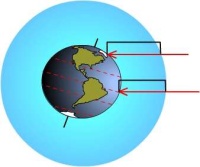
The Earth-Sun distance only varies by about 3 million miles compared to an average distance of 93 million miles over the year. Thus path length doesn't change much as the Earth revolves around the Sun. But once sunlight reaches the outer edge of the atmosphere, the thickness of the atmosphere has a significant impact on insolation. Due to the curvature of the Earth, a beam of light striking the Equator passes through less atmosphere than one at a higher latitude. As the amount of atmosphere through which the beam passes increases, the greater the chance for reflection and scattering of light to occur, thus reducing insolation at the surface.
State of the Atmosphere and Insolation
Clouds, particulates, and aerosols suspended in the air have a dramatic effect on the transmission of insolation. These components of the atmosphere absorb radiation emitted by the earth, reflect incoming solar radiation back to space and scatter light into many weaker beams. Scattering of light by particles in the atmosphere is responsible for the color of the sky. Clouds are particularly important in determining the amount of insolation. Clouds can reflect much light back to space or scatter and diffuse light.
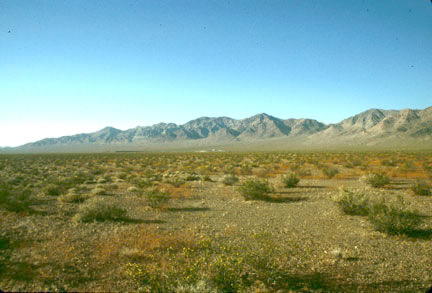

Learn more with "Digging Deeper: Global Dimming" or skip and continue reading.
Human activities from agriculture to industry release particulates into the air. Studies in many parts of the world indicate that insolation has been decreasing as particulate concentrations have been increasing, a phenomenon called global dimming. Research conducted in the Maldives demonstrated that dirty air descending from India produced a three kilometers thick pollutant layer that hung over the northern islands. The pollutant layer cut down the sunlight reaching the ocean by more than 10 percent. Climate scientists fear that the reduction of insolation by atmospheric particulates are masking the true magnitude of global warming. A reduction of particulate pollution to protect human health may cause an increase in insolation and thus accelerate global warming.
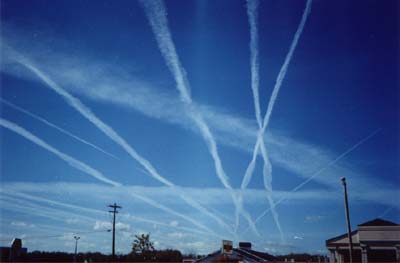
Contrails are clouds produced from jet exhaust and have been a subject of research for some time. They are difficult to study because they develop and dissipate quite rapidly, or so many of them in the sky they merge. This makes it difficult to perform baseline studies on individual clouds. When first formed they are thick and rounded blocking light like low stratus clouds causing the air to cool. Over time they morph into thinner clouds like high cirrus better at absorbing radiation thus warming the air. When air transportation was suspended over the United States shortly after the events of September 11, 2001, atmospheric scientists had an opportunity to study the effect of contrails on weather. What they found was daily temperature ranges increased by as much a two degrees fahrenheit in the absence of contrails over the contiguous United States.
Video: Climate Change and Global Dimming (Courtesy The MetOffice)
Jim Haywood, climate expert at the Met Office Hadley Centre, explains the phenomenon of global dimming and the impacts on global warming.

